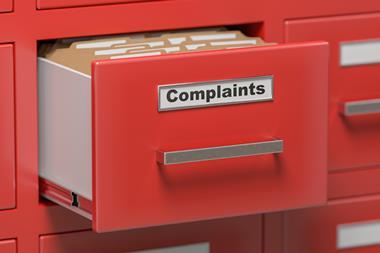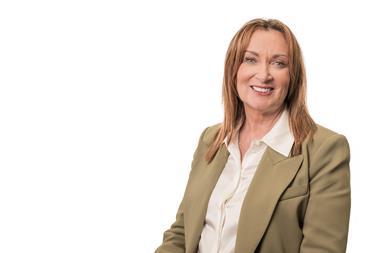UK regional brokers must consider how they can better manage the move to a hybrid or fully remote working model amid increasing errors and omissions claims
Alongside many other industry sectors, brokers were forced to operate remotely in line with government rules during the Covid-19 pandemic.
However, the fear that these changes in working practices would result in climbing errors and omissions (E&O) claims has been a constant worry for broking professionals.
E&O is a type of professional liability insurance that protects companies, their employees and other professionals against claims of inadequate work or negligent actions. Any business that provides advice or a service requires E&O insurance.
E&O will typically cover court costs and any settlements.
Max Carter, chief executive of specialist liability broker New Dawn Risk, said there has been a noticeable rise in E&O claims against insurance brokers.

“There has been a big pick up in E&O claims,” he explained. “Many have been down to basic mistakes which have taken place [while] working from home.”
This could include, for example, staff being unable to double check their work with colleagues or management – these conversations may have typically taken place while sat next to each other in an office.
Carter added that one insurer, which writes over 1,000 broker E&O policies, had told him that it had seen “quite a significant” spike in the number of claims involving brokers in recent months.
However, this seems “to be more an issue for regional brokers at present”.
He explained: “We have had a discussion with our insurer for liability risks, which has a portfolio of mid-sized London market brokers, and [it has] seen no real increase, so this is not [consistent] across the market.”
Remote risk
In terms of the drivers behind rising broker E&O claims, Carter pointed to BI disputes arising from the Covid-19 pandemic and associated national lockdowns as playing a part.
“We have seen some disputes over the coverages in policies which have failed to response to Covid claims,” he explained.
“However, it is really down to the move to remote working and the inability to put in place the checks and balances that are needed to pick up mistakes before documentation is sent to the policyholder.”
Carter added that an issue for brokers, therefore, is the establishment of new supervision and governance systems that can identify and manage errors as they occur while staff are working remotely.
He said: “There are exposures which come from staff working from home.
“There are challenges to the ability to concentrate on work which are not in the workplace – [this] can lead to mistakes or errors.”
To mitigate this potential problem at his firm, New Dawn Risk has implemented an electronic document production and e-signature system, which allows documentation to be transferred electronically. This process enables checks and balances to be put in place for those that are working remotely.
“There are still brokers which are issuing paper documentation and using wet signatures. This makes having more than one set of eyes on documentation difficult if you are not in an office environment,” Carter noted.
Unable to invest in homeworking
Broker trade association Biba told Insurance Times that a rise in E&O claims against brokers has not been flagged as an issue by its members or the wider market.
A spokesperson for the body said: “In essence, it turns out that this has not been raised with us as an issue.
“Technology has aided interaction and oversight. Procedures have been adapted to respond to remote working.”
However, a London market liability underwriter noted that although E&O claims targeting brokers have not reached a crisis level, the increase in these claims has been observed by those with an interest in this class of business.

He told Insurance Times: “We were braced for a rise in the number of E&O claims due to the well publicised coverage issues through the pandemic.
“Whenever there is what can be deemed to be major events, we see a rise in E&O claims against the market.
“If claims are declined, it is natural for policyholders to look to the brokers [that] have advised them on their coverage needs. What is surprising is that we really have not seen the huge leap in E&O claims which have been directly down to coverage disputes.”
The crux of E&O claims can be simply traced back to brokers’ sudden switch to remote operations due to the pandemic, the underwriter added.
“Brokers, like every other business, were suddenly told to close their offices and staff were told to work at home. For many regional brokers, they were not in a position to invest in new equipment and, as such, the ability to implement management systems was difficult.
“You also had staff suddenly having to juggle their children being off school, their pets and other household tasks [alongside] work, so it is little surprise [that] mistakes may have been made.”
Paper trail
Documentation remains the biggest issue for brokers here - not only the accuracy of the correspondence and paperwork they share with clients, but also the need to document their actions to ensure there is a clear evidence trail should things go awry.
The underwriter continued: “The change in the way we work has also created a very different way of operating for brokers and their clients. It has seen clients’ risk profile change.
“The first thing brokers need to be doing is conducting policy reviews for all their clients. They need to identify new coverage gaps, if they exist, and also where circumstances have changed to the point where some covers are no longer required by the client and that premium should be moved to other risks.
“I don’t think we are at the point where the scale of E&O will move the market significantly in terms of pricing, but I do believe that brokers will be asked to explain the systems they have in place around the governance and management of staff [who] are working remotely.”













































No comments yet